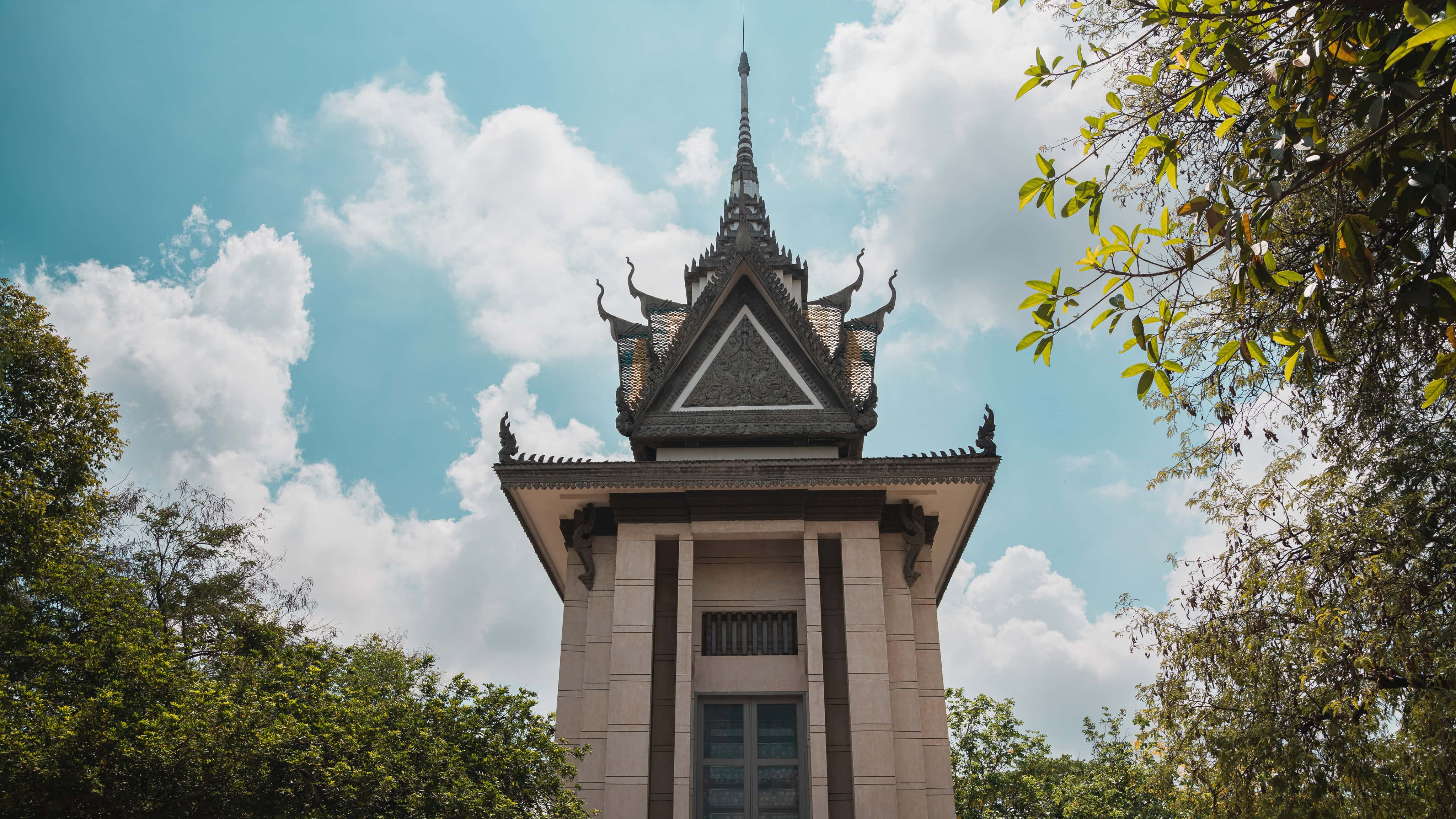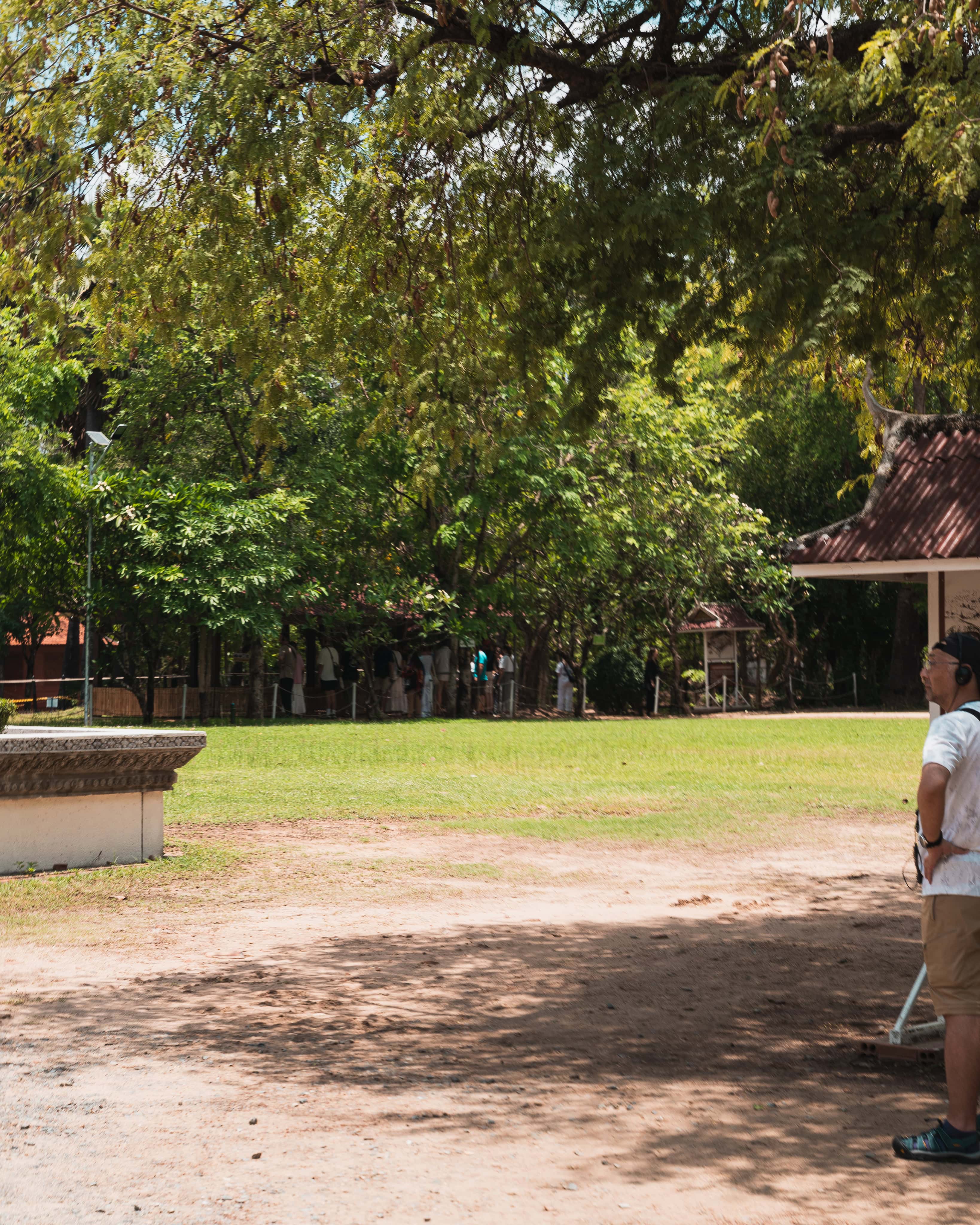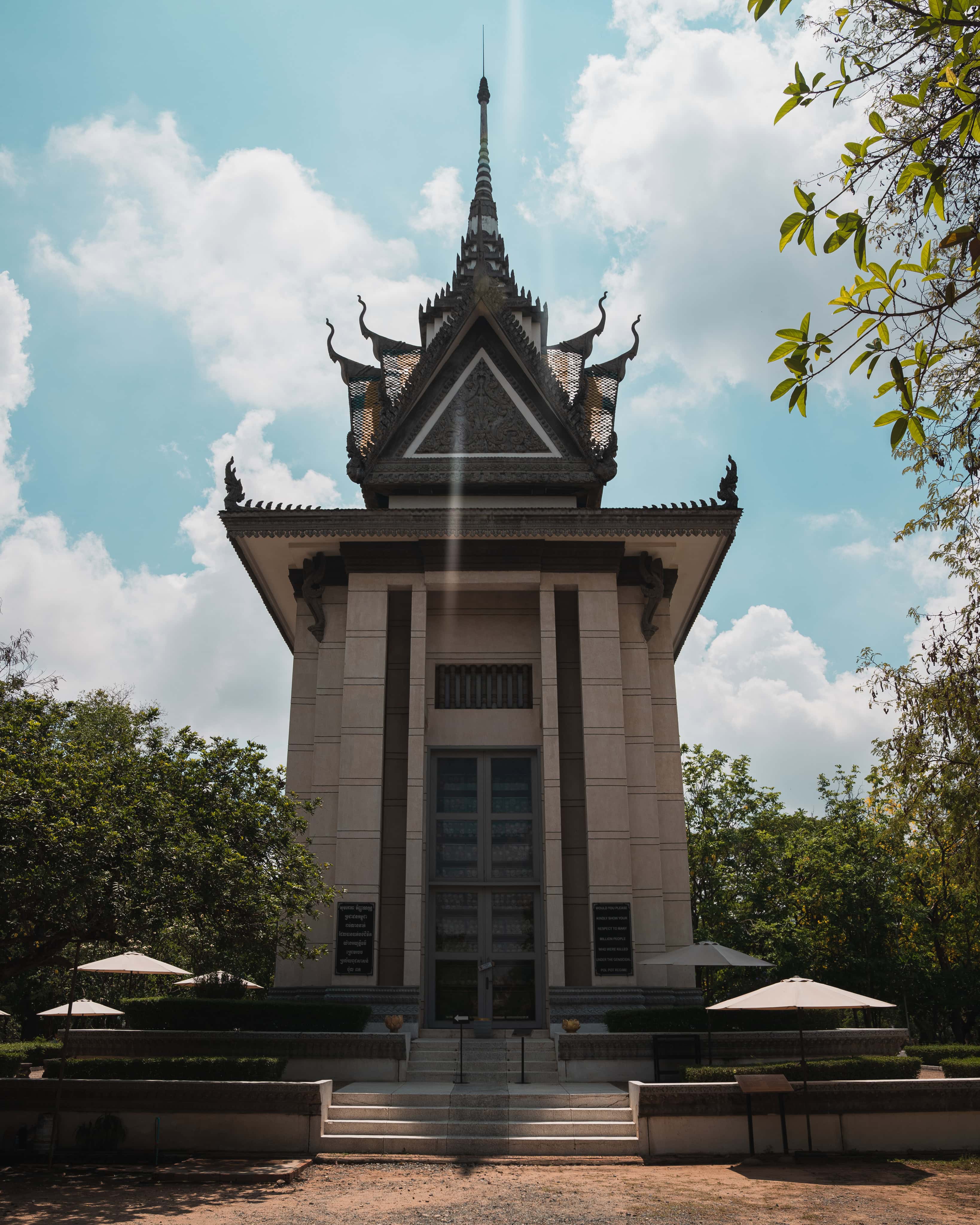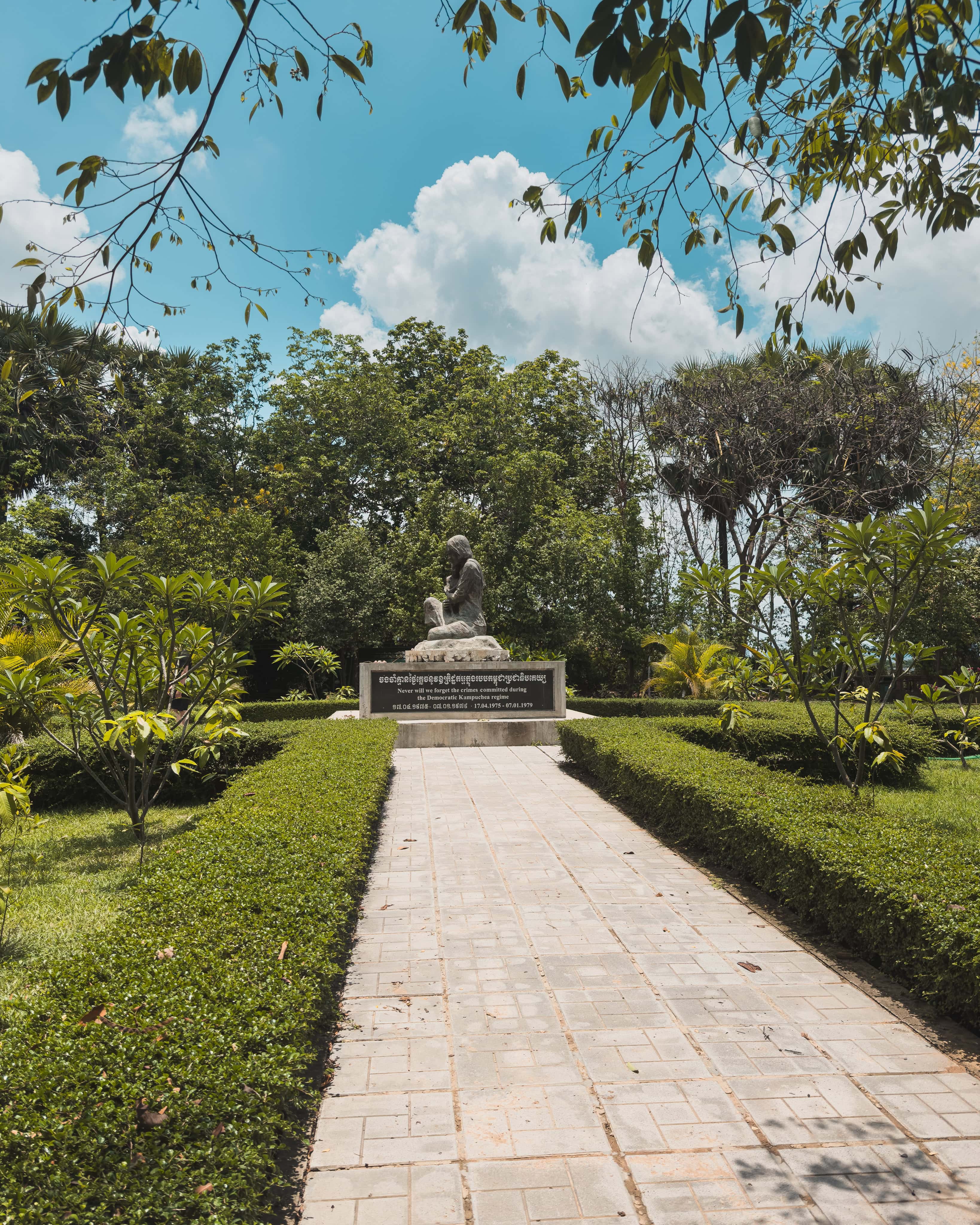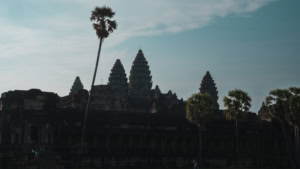About 15 kilometres south-west of the Cambodian capital Phnom Penh lies Choeung Ek, one of the country’s most famous ‘killing fields’. Today, the site is a memorial to the victims of the Khmer Rouge regime. But Choeung Ek is just one of over 300 Killing Fields in Cambodia – silent witnesses to one of the cruellest chapters in world history.
The rise of the Khmer Rouge
The story that reached its grisly climax here began many years earlier. The Khmer Rouge, originally a small communist group, formed in the mountains of Cambodia. Initially an underground movement, it grew rapidly as a result of the political and social crises of the 1960s and early 1970s. Civil war, massive poverty and dissatisfaction with the existing government drove many people, especially the rural poor, into the arms of the Khmer Rouge. They promised an end to inequality and corruption – a new, equitable society.
On 17 April 1975, the Khmer Rouge took Phnom Penh. The civil war was over, but the nightmare was just beginning. Within days, the new rulers closed schools, government offices, hospitals and shops. The city’s entire population – some two million people – was forcibly evacuated within three days. The aim was to build a new society without the influence of the city: Pol Pot’s vision of ‘Year Zero’.
Pol Pot, the leader of the Khmer Rouge, had a radical communist utopia. He wanted to create an agrarian ideal. City dwellers, educated people, doctors, teachers, engineers, even people who wore glasses or spoke a foreign language were considered enemies of the revolution. Anyone suspected of threatening the plans was mercilessly murdered. The slightest sign of education or dissent was enough to be sentenced to death.
Offenders and victims: A cruel truth
One of the bitterest lessons of the Killing Fields is that it was not an occupying power oppressing the country – it was Cambodians killing Cambodians. Many Khmer Rouge soldiers were simple farmers, illiterates or young people lured by the promise of prosperity and a better future. The ‘new people’ – intellectuals and urbanites – were scapegoated for the nation’s woes.
Distrust and fear also permeated the ranks of the Khmer Rouge. Pol Pot became increasingly paranoid, executing even loyal followers on the slightest suspicion.
The Killing Fields: Systematic mass murder
Choeung Ek was one of the many places where the cruel system reached its climax. Around 20,000 people were brutally murdered and buried in mass graves. Every day, lorries brought hundreds of new prisoners from the notorious Tuol Sleng prison (S-21). They were led to believe they were going to a new home. In reality, death awaited them.
Revolutionary songs blared from jukeboxes to drown out the screams of the victims. Children were beaten to death on trees in front of their parents. Even today, fragments of bone, teeth and bits of clothing can be found on the site, sticking out of the ground in heavy rain – silent memorials to an unimaginable tragedy.
Many of the mass graves remain untouched. Partly to allow the dead to rest, partly because much of the site is covered in water.
The fall of the Khmer Rouge
The Khmer Rouge regime only fell after the invasion of Vietnamese troops in 1979. Pol Pot and his followers fled to the mountains near the Thai border and lived there for years as guerrilla fighters. They tried in vain to regain power. Pol Pot himself died in 1998 in circumstances that remain unclear, never having been brought to justice for his crimes.
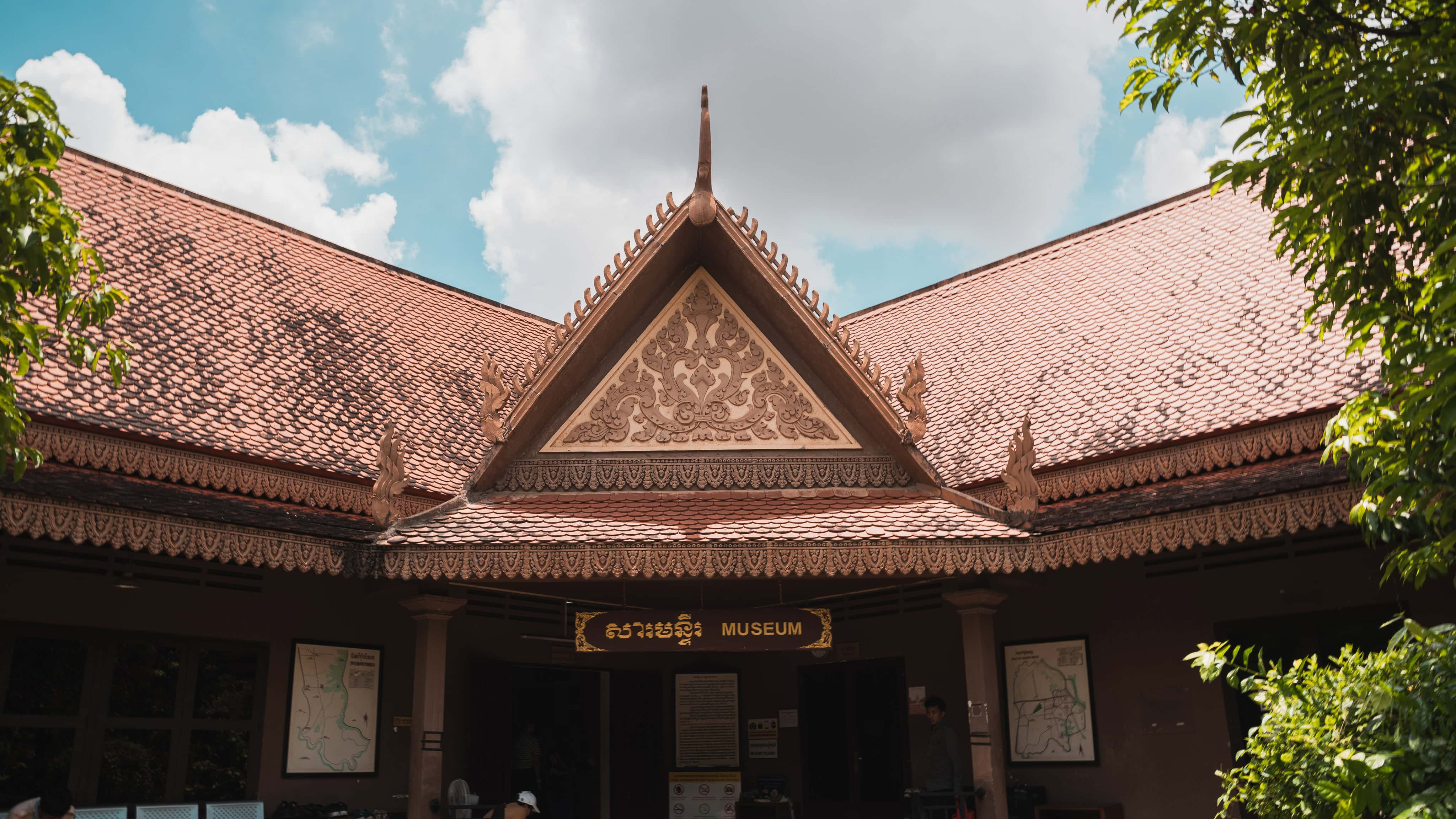
The memorial today: A place of silent remembrance and learning
The Choeung Ek Killing Fields were transformed into a central memorial site after the end of the terror regime. Today, there is a poignant silence at the site of unimaginable atrocities. The atmosphere is reverent, reflective and deeply moving. Everywhere on the site you can feel the weight of history – and the quiet dignity with which the victims are remembered.
At the centre of the memorial is a 17 metre high glass Stupa of Remembrance. Built in 1988, it is the central memorial to Choeung Ek. Inside are some 5,000 human skulls exhumed from the surrounding mass graves. Many of these skulls show clear signs of violence: Knocks, fractures, bullet holes. Each skull tells a story of suffering and loss that cannot be ignored. Even today, on rainy days, new pieces of clothing, teeth or bones protrude from the ground. Local workers remove and store them one by one.
Several mass graves are marked around the Stupa. Some of these pits are still open, some with small signs explaining how many people were killed and buried here. Particularly poignant is the ‘Killing Tree’, where the Khmer Rouge brutally murdered young children. Today this tree is adorned with colourful bracelets and flowers that visitors can leave as a sign of remembrance.
An impressive audio guide takes visitors around the site in several languages (including German). Particularly powerful are the personal stories of survivors and contemporary witnesses who tell of their own experiences: of fear, uprooting, hopelessness – but also of the will to survive and strength. The mixture of factual information and personal stories makes the visit a powerful experience that will stay with you for a long time.
Choeung Ek’s Killing Fields is deliberately kept simple. No obtrusive displays, no showmanship. The memorial emphasises authenticity and silence as a means of remembrance. Visitors are asked to be respectful: Photography is allowed, but noise, laughter and inappropriate behaviour are strictly forbidden.
For many Cambodians, Choeung Ek is a place of mourning as well as remembrance. The wounds left by the Khmer Rouge are still raw. The existence of the memorial gives a voice to the victims and helps to ensure that the collective memory of this dark time is not lost.
Why a visit to the Killing Fields is important
Visiting the Killing Fields is not an easy experience. But it is an essential part of understanding Cambodia’s history and a reminder to the world of where fanaticism, extremism, fear and hatred can lead. It is a place of mourning and quiet reflection – and a memorial to the victims.

